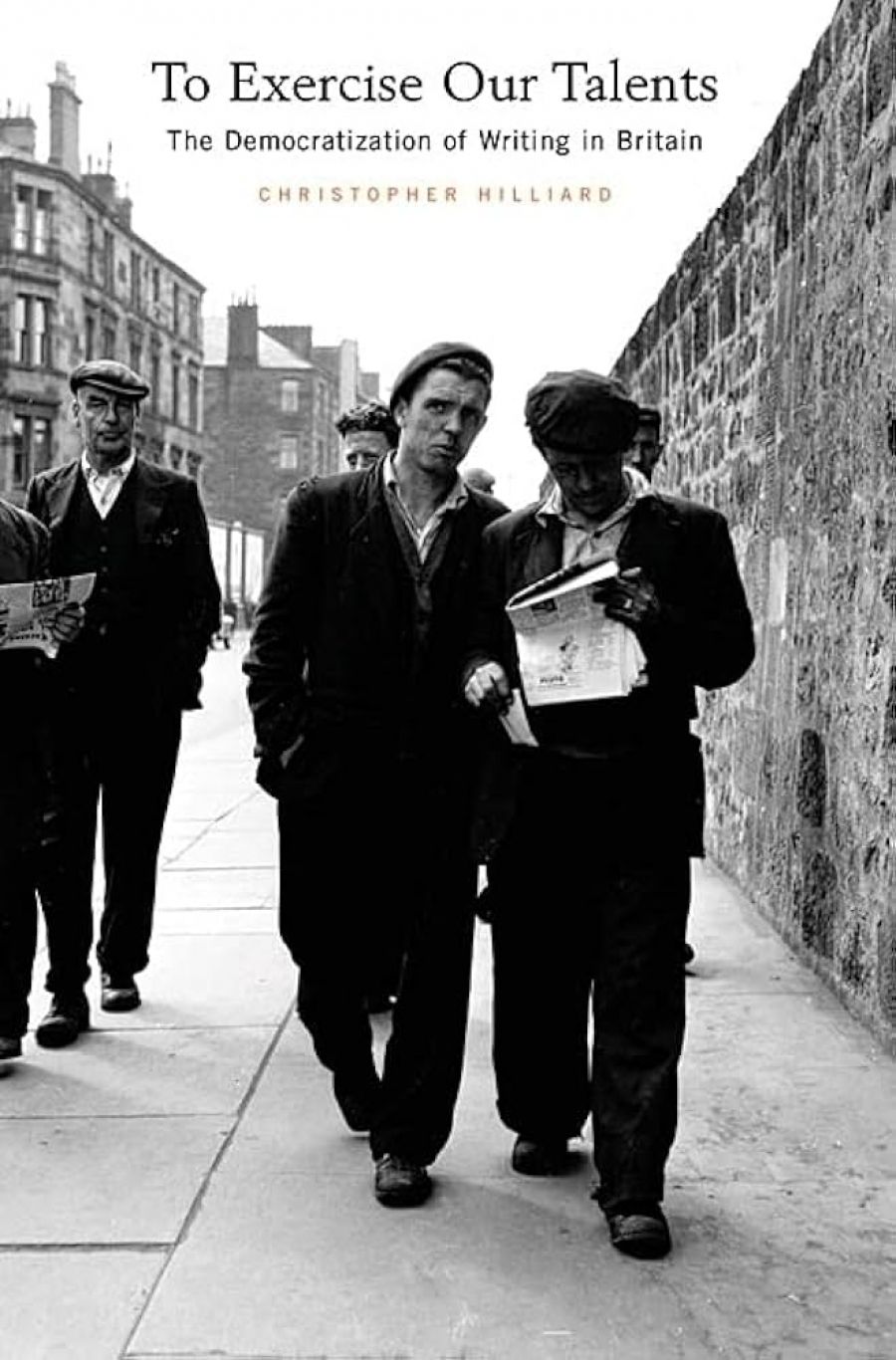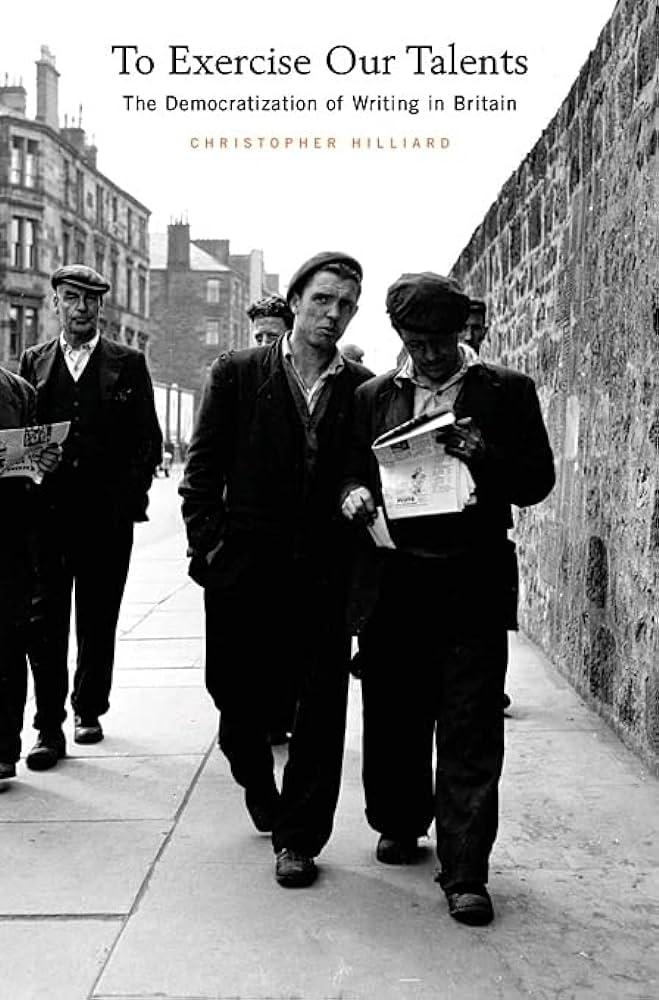
- Free Article: No
- Contents Category: Literary Studies
- Review Article: Yes
- Article Title: Democratic model
- Online Only: No
- Custom Highlight Text:
Once the prerogative of connoisseurs and bibliographers, the study of the book has become an increasingly popular field of cultural history. Earlier scholarship was concerned with rare and variant editions of canonical texts; recent work is more inclusive, comprehending a wide range of popular and ephemeral literature that extended the reach of print. Attention has turned from production to consumption, tracing the spread of literacy and analysing the changing interests of readers. Hence Martyn Lyons and Lucy Taksa’s Australian Readers Remember (1992) sits alongside a number of similar studies for other countries.
- Book 1 Title: To Exercise Our Talents
- Book 1 Subtitle: The democratization of writing in Britain
- Book 1 Biblio: Harvard University Press, $59.95 hb, 390 pp
- Book 1 Cover Small (400 x 600):

- Book 1 Cover (800 x 1200):

A recent book in this mode was Jonathan Rose’s The Intellectual Life of the British Working Class (2001), which used social surveys, library registers, school records, opinion polls and a vast body of autobiographical material to ascertain the reading habits of workers. Rose purported to have discovered not just what these workers read but how they read it, and exulted in his discovery that even the radical autodidacts of the interwar labour movement were highly conservative in their literary tastes. They had little time for modernism but clung to the classics.
Christopher Hilliard finds a similar preference for familiar forms in his study of British working-class writers, but is far more sensitive to the nuances and complexities of literary production. His work is grounded in the ambiguous consequences of the democratisation of culture: on the one hand, the increased availability of books and periodicals removed the barriers to participation in cultural life; on the other, new forms of mass communication seemed to threaten it.
Hilliard pursues his inquiry by attention to three literary movements, linked sequentially but with changing constituencies and concerns. The first was the amateur writers’ ‘movement’ that began in the 1920s. An expanded market for fiction provided openings for aspirant writers, who were assisted by writing magazines, textbooks, correspondence schools and, most of all, writers’ clubs. Largely based in regional centres, predominantly female and typically apolitical, these groups provided a practical forum on how to get published. They thought of their work as fiction rather than literature, studied the market closely, and esteemed simplicity and sincerity as the key to success.
Writing from life formed a bridge from these middlebrow writers’ circles to the working-class author in the 1930s. Hilliard rightly emphasises the novelty of this worker–writer. Pre-war exponents such as Robert Tressell were isolated figures. The proletarian novel of the 1930s was a distinct genre; Hilliard suggests it arose from a conjunction of left politics and public interest that ‘valorised the working-class voice’.
The politics of the popular front called for a broader mobilisation of progressive writers, artists and intellectuals. Meanwhile, Hilliard argues, the uneven recovery from the Depression stimulated a concern for ‘the condition of England’ and especially for the circumstances of the unemployed in the stricken industrial heartlands. This need was met by a variety of writers (among whom J.B. Priestley and George Orwell were probably most influential), but allowed a space for the proletarian novel. I am not sure that this explanation does justice to the communist cultural initiatives that preceded the popular front, and it overplays the local circumstances of a popular front that here in Australia, as in Europe and America, enlisted national traditions in a common international movement. But Hilliard has some acute observations on the English, Scottish and Welsh worker–writers who emerged at this time. They were men who wrote compulsively on kitchen tables amid the hubbub of family life; women lacked even that opportunity, and the tension between husband and wife was a recurrent theme of the proletarian novel. They wrote for commercial publication, and some even hoped to afford a room of their own, but even the most successful – Bert Coombes – kept working to maintain the connection with the source of his writing. They wrote about their own people in their own language, often employing dialect, but relied also on the advice of the university-educated communists and progressives who directed the periodicals and publishing houses. And they remained highly reliant on traditional models of narrative realism. Gaskell and Dickens echo in the working-class novel; Zola’s Germinal shapes the mining novels.
The third of these democratic literary movements came in World War II, partly through an extension of the periodical format from the popular front into the people’s war, and partly through the formation of writers’ circles in the armed forces and the self-production of camp bulletins. Hilliard is particularly interested in the wartime connotations of the people, and provides perceptive observations on the popular verse generated by separation and death. For two or three years after the war, the literary populism of wartime persisted and then dissipated along with the hopes for a new order. The old outlets for print publication were shrinking. But the working-class novelists of the 1950s were shifting into clerical and other white-collar occupations; the transformation of working-class communities and livelihoods placed writing in a different relation to working-class life. John Braine, Alan Sillitoe, David Storey and Keith Waterhouse created a different kind of fiction, and in the 1960s new cultural forms swept away these forms of writing from life – at least until blogs and university courses in creative writing revived it.
Hilliard’s scholarship is impressive. He has mined the archives, read extensively and perceptively – a surfeit of predictable prose has not dulled his interest – and interprets the material with a deft economy. This exercise in the cultural history of writing calls out for an Australian equivalent, and provides a model of how to conduct it.


Comments powered by CComment